
15 minute read
Test publication

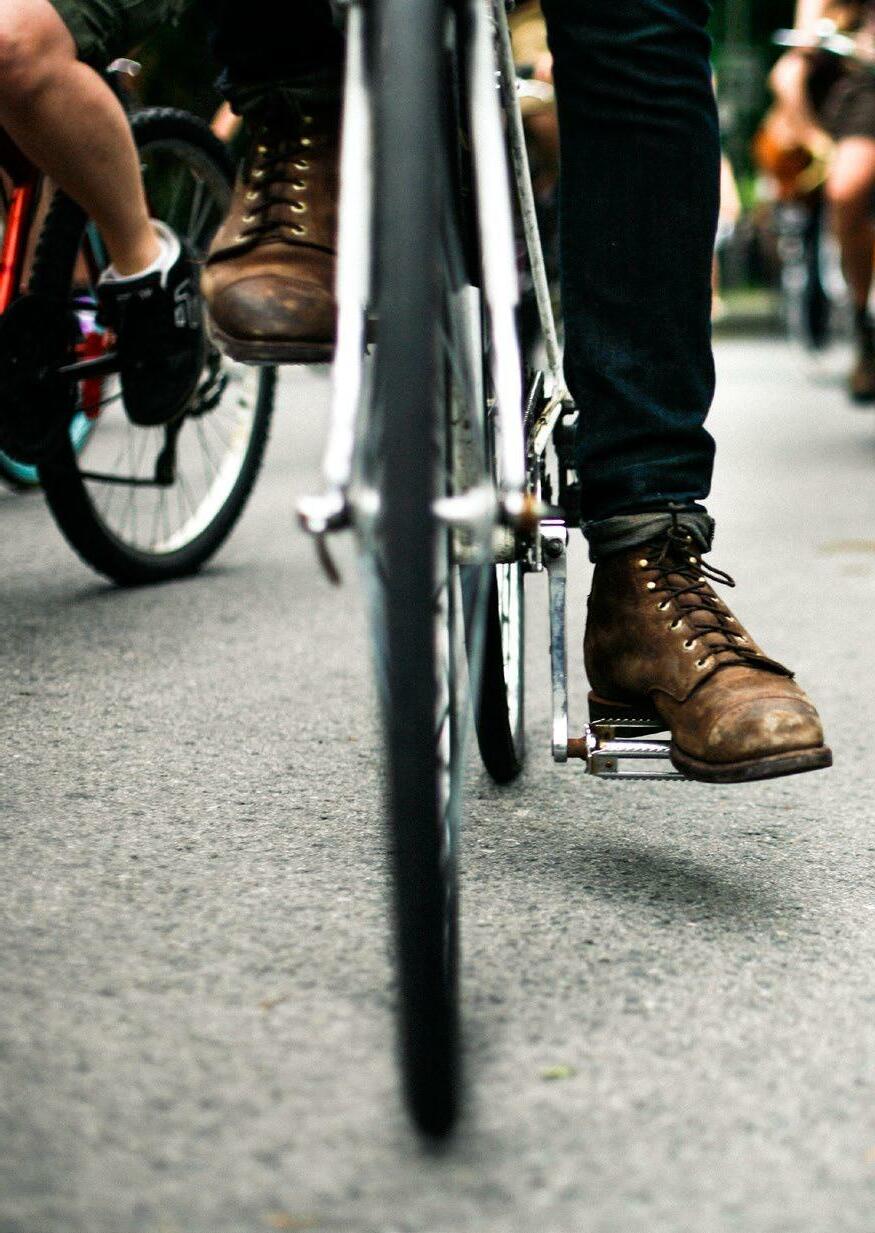
Boneshaker: Real Cycling
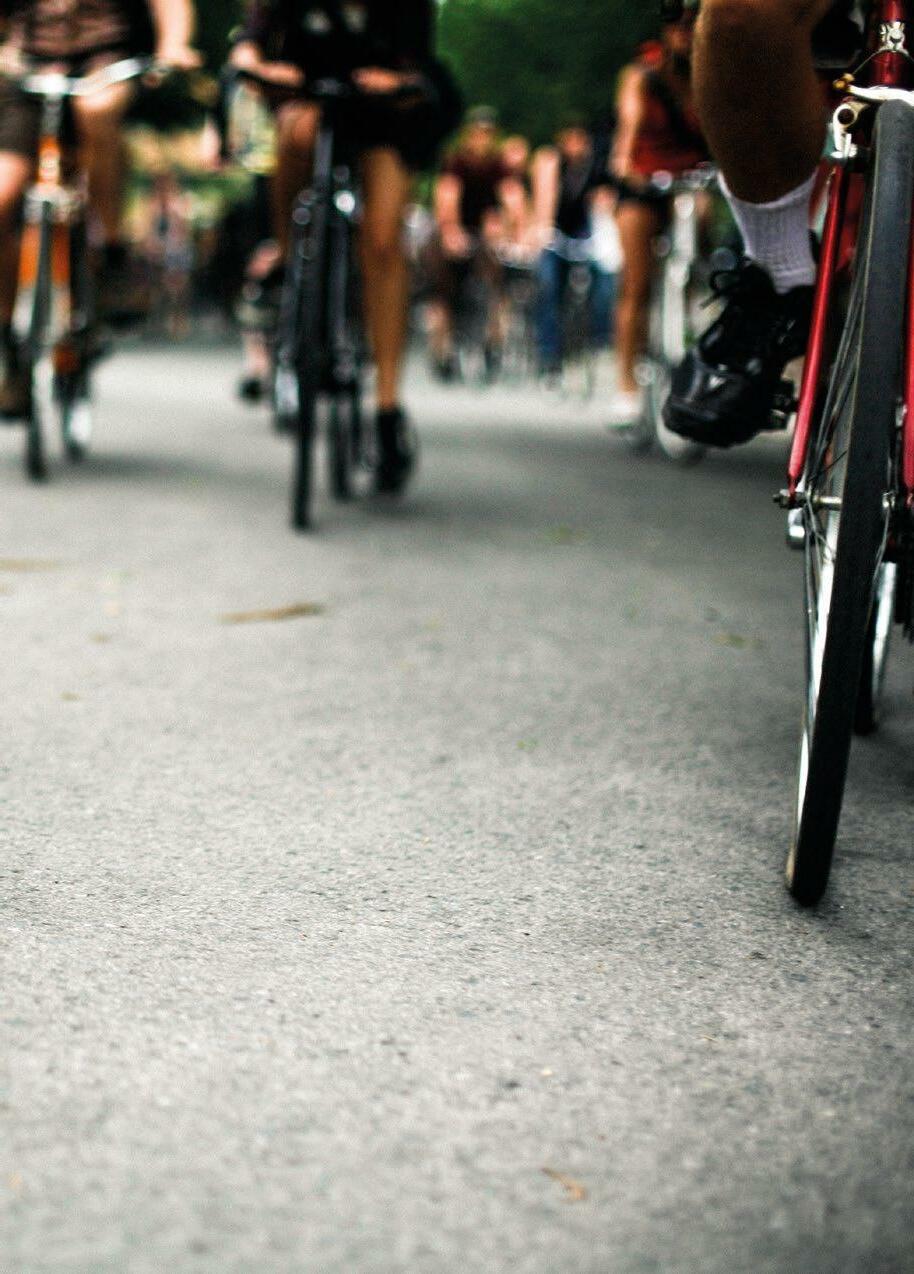
Except this isn’t real, of course, it’s digital. To get your hands on a real Boneshaker, to feel it and smell it and hide it in your pannier, go here. We make other great bike stuff too, especially bicycle art prints. Check them out here. And to let your ears take your mind on a journey, there’s our new podcast series.
For kicks. For adventure. For the soul.
The reasons we ride are as varied as the places we ride through. Thousands of miles are covered in the next hundred pages: our brave writers journey underground and back in time, through America, across the Balkans, over the Alps and the Himalayas and on around the world. Twice. But for all these vast distances, the greatest journey they each make is in the mind, as the wheels spin, the heart expands and the self unwinds to a distant horizon...
Welcome to issue #15
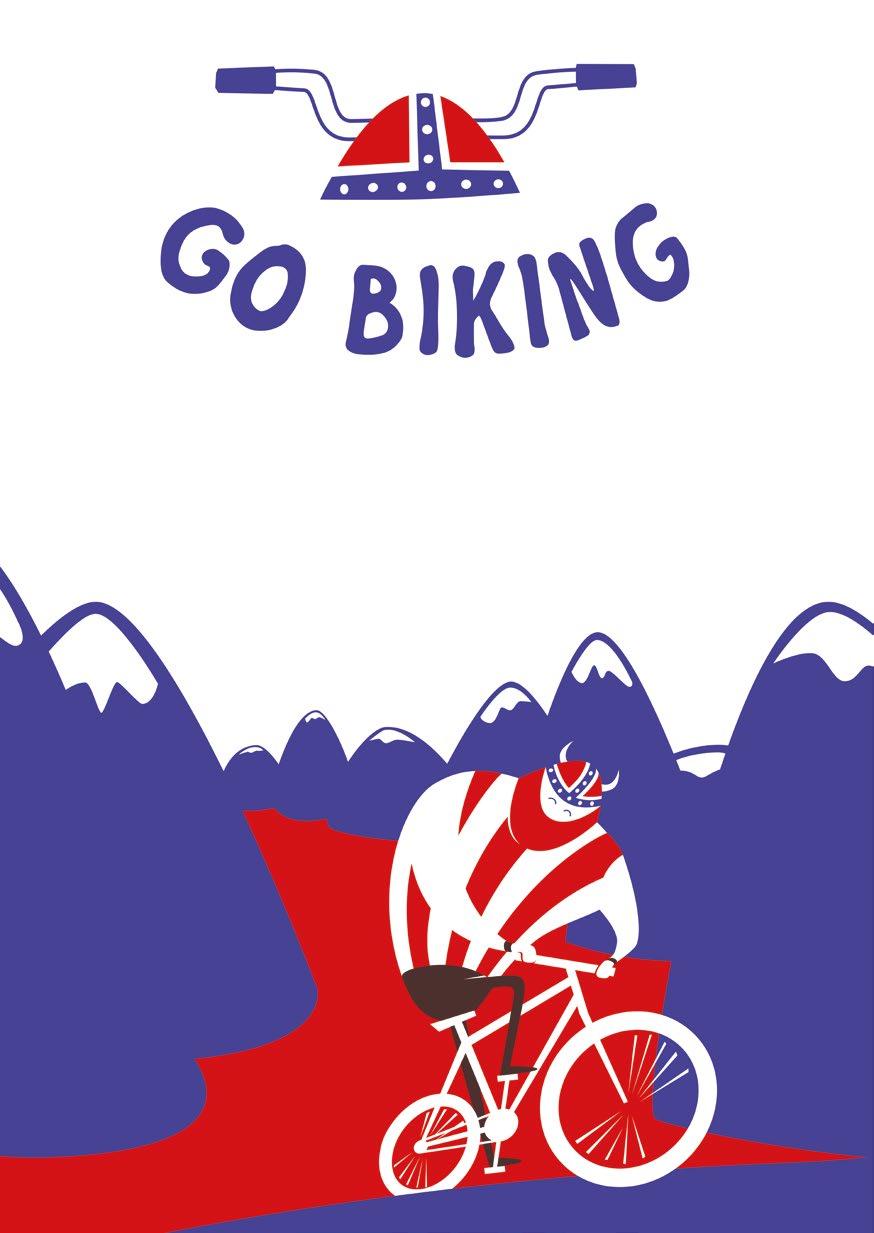
contributors
words marko S ˆajn, jude brosnan, julian sayarer, zoe howes-wiles, marc simper-allen, mike white, matt cook, dave gill, raphael krome, alex throssell, simon lay, scribbletribe studios, chris lanaway, tony haupt, jet mcdonald, pi manson
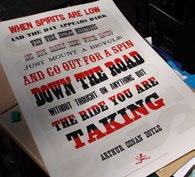

photographs marko S ˆajn, ty snaden, colin flash tonks, joff summerfield, lucas brunelle, benny zenga, duncan elliott, chris sleath, dave gill, raphael krome, simon lay, chris lanaway, tony haupt
illustrations ... paul heredia, re-robot studio, chris sleath, casmic lab, gill chantler, samuel james hunt, chris thornley, eleanor shakespeare
layouts joanna buczek, luke francis, chris woodward, max randall, jordan carr, molly cockroft, jack sadler, sam edwards, ben hamilton, katie mitchell, ali campbell
backpats and handclaps
john coe, matt at bristol dropouts, peter whitehead, the bristolian café’s mega breakfasts, kai at offscreen, rob, ryan & the roll for the soul crew, benjy johnstone, james perrott for his unwavering business guruship, tor mcintosh, benny zenga, nick hand at the letterpress collective, rik at ripe digital, matt farah at williams research center, tommy godwin, anny mortada, penny morris, muriel at swrve, our fellow bipsters, oliver norcott, phil hambley at scribbletribe studios, sadie ruth campbell, cass gilbert, suresh ariaratnam, and the unflappable support of ian and the crew at taylor brothers. no thanks at all to betsy the keyboard-trampling cat
copyrights & disclaimers
The articles published reflect the opinions of their respective authors and are not necessarily those of the publishers and editorial team. © 2014 Boneshaker. At present, we are committed to remaining free from advertisements & advertorial.
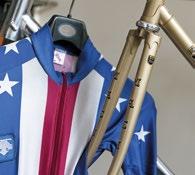

Tommy Godwin’s record-breaking 1939 ride is a feat of physical and mental endurance so momentous, so outrageous, that it’s difficult to fully comprehend what the achievement actually represents.
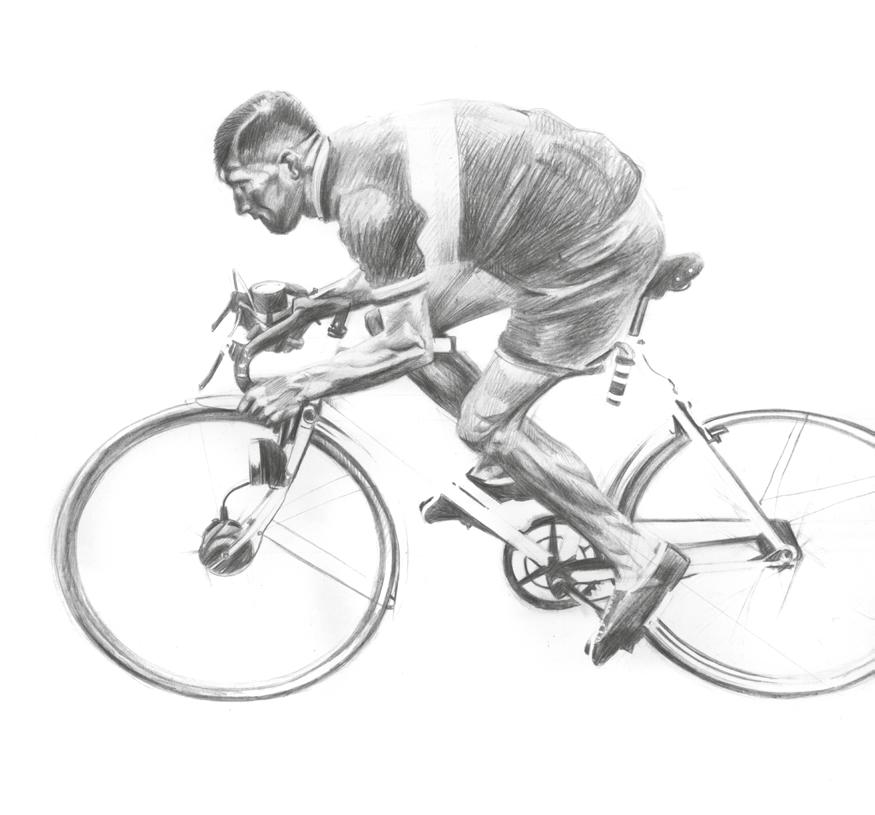
Illustrations by Samuel James Hunt
TOMMY GODWIN THE LONG DISTANCE LEGEND
Perhaps the greatest endurance feat of all time, and one of the least well-known and celebrated, Tommy Godwin’s record-breaking 1939 ride is a feat of physical and mental endurance so momentous, so outrageous, that it’s difficult to fully comprehend what the achievement actually represents.
If you are not a regular cyclist, but particularly if you are, consider this scenario: you wake before the dawn and drag yourself from your bed and out into the bleak morning of a Boxing Day in wartime England.
You eat little (if anything) for breakfast and ride purposefully through the inclement weather and along poorly maintained streets. Your bike is wellmaintained, but is a heavy steel-framed machine with only four gears. You ride for some hours, and then you ride for many more – until you have completed a shattering 185 miles on the road.
The next day you ride 204 miles.
You don’t think that this is particularly extraordinary; in fact it’s actually a little below your daily average, and after all you have been doing this for over fifty-one weeks straight, with only one day off!
In four days’ time you have good reason to cheer the arrival of the New Year – your name is Tommy Godwin – and you have just smashed the record for most miles cycled in a year.
In a modern age of millionaire golfers and petulant footballers, Tommy’s achievement serves as a
useful reminder of what true sporting prowess was, and can still be. Tommy was described by his family as the most unassuming, gentle man, but he quietly proved that he was as hard as iron physically.
Known to friends and family simply as ‘Tommy’, Thomas Edward Godwin was born in Fenton, Stoke-on-Trent on the 5th of June 1912. At the time children grew up quickly, were often raised in hardship and were expected to work from an early age. Tommy was no exception, and took a job as a delivery boy aged twelve, which helped him to pull his weight and share the burden of providing for a family of twelve.
A requisite (and most likely to young Tommy a perk) of the job, Tommy was equipped with a heavy bike with which to complete his daily deliveries on behalf of the owner of a general store, newsagents and butchers. Tommy enjoyed riding the bike as part of his rounds, and an interest in cycling sparked to life.
A few years later, the then fourteen-year-old Tommy would be inspired by an advert asking for participants in a local 25-mile time trial.
Legend has it that Tommy hacked off the heavy steel delivery basket from the front of his bike, and kitted out with both borrowed shoes and wheels proceeded to steam around the course in a winning time of one hour and five minutes.
Still at a tender age, the initial spark had already exploded into a full blown love affair with cycling.
He joined various cycling clubs, won races, and began to amass an array of over 200 medals and trophies, and by 1937 his confidence was such that he decided to challenge the ‘year record’, a record recently won by the Australian pro-rider Oserick ‘Ossie’ Nicholson.
Tommy succeeded in persuading his employer to sponsor him, and at 5am on New Year’s Day 1939, after months of physical and mental preparation, vegetarian, tee-totalling, 26-year-old Tommy pushed off, and pedalled the first mile of a journey that ultimately would not end until a further 500 days, and 99,999 miles had been completed.
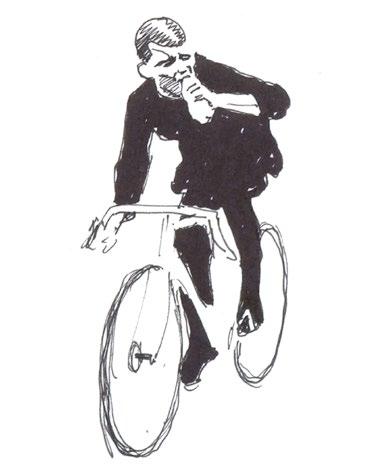
Tommy’s plan to win the coveted year-record was simple but brutal; he aimed to cycle 200 miles a day, broken down into 4 x 50 mile ‘chunks’ allowing time for food and rest.
On the longest day of the year, 21st June 1939, Tommy rode a total of 361 miles. Had he watched the summer-solstice sunrise over Stonehenge, at the end of the day he could have been sitting down to supper in Paris.
By October 26th, Tommy had achieved what he had set out to do, and much, much more. The year record had not only been won, but with 66 days to spare, he had time enough to smash the previous record – and put it beyond reach for all others who would valiantly try, yet fail for many years to come. Even after Tommy had completed the year-record challenge on 31st December, he didn’t just hang up his cycling shoes and take it easy in 1940. Just the opposite, he carried on riding huge mileages until mid-May.
Tommy, not entirely satisfied with the greatest year-ride of all time, wanted to push on further to gain a secondary record of the fastest completion of 100,000 miles! René Menzies, a previous holder of the year-record, had set the 100,000 mile target at an impressive 532 days.
By this time the restrictions imposed by an escalation of World War II were starting to make problems for Tommy. Besides the threat of a callup to serve his country, Tommy was also hampered by severe penalties for failing to abide to blackout restrictions and by dwindling food supplies. Nutrition bars and gel sachets weren’t an option for Tommy. His diet was very simple: bread, milk, eggs, cheese – and even these became scarce as rationing began.
Tommy rode two bikes during the course of his record-breaking ride. The first, a ‘Ley TG Special’ was custom built at the request of Tommy’s employer and sponsor, Mr A. T. Ley. The frame was built with Reynolds 531 tubing with high pressure 27" Dunlop tyres, a Brooks saddle, Solite front hub and (initially) a Sturmey-Archer three-speed hub gear.
The bike rode well and had been put together with durability in mind. However, huge mileages and poor road conditions would lead to excessive wear on the bike, and the costs of spare parts and bike maintenance ultimately became too much of a burden for Ley Cycles to bear.
Arrangements were made for a new sponsor to step in to support Tommy’s record-attempt, and it was
the Raleigh Cycle Company that were most keen to be involved.
Tommy’s new bike would be a Raleigh Record Ace. A four-speed medium-ratio Sturmey-Archer hub gear, which had been fitted to the Ley TG Special in March, was brought over to the new bike for continued use.
Although the Raleigh was cutting-edge technology at the time, it was still a 14kg-ish bike – compare that to the 2kg frameset of a top-end modern bike like the Specialized S-Works + McLaren Venge.
Besides the differences between Tommy’s bike and modern machines, Tommy also didn’t have the benefits that professional riders have today with regards to clothing, accessories and personal maintenance. Lycra, breathable man-made fibres and lightweight waterproofs were not an option in 1939. Tommy would wear thick tights and heavy woollen clothing that would often be wringing wet at the end of a day’s ride. Endless days in the saddle were taking their toll and Tommy suffered from saddle soreness. After limited success using ointment to relieve his suffering, on the advice of a female cyclist he donned a pair of ladies silk undies and greatly reduced his discomfort!
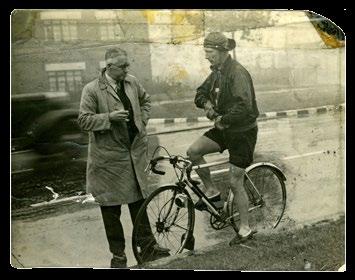
The pressure increased further on Tommy and his quest to gain the 100,000 mile record. The UK had experienced a particularly harsh winter at the start of 1940, and the roads were treacherous, with huge amounts of ice and snow covering the country.
Tommy had a terrible time in the freezing conditions, often skidding and falling from his bike. Damage to the bike, and also to himself, were all too common and simply had to be endured.
Eventually the winter broke and Tommy had the chance to pile on the miles. He was back on track to beat Menzies’ record. On May 13th, 1940, Tommy rode into Paddington Recreation Ground Track; at long last, he had the finish line firmly in sight.
Watched by his sponsors, cycling friends and other dignitaries, Tommy rode the final mile of a legendary journey. Tommy had bagged yet another
emphatic victory. Perhaps as an effort to help make the statisticians’ and sports writers’ jobs easier, he had covered the 100,000 miles in 500 days straight; a simple sum to work out that he had averaged 200 miles a day.
Tommy was called up to the RAF very soon after the end of his record-breaking ride. No chance to rest, or to reap the deserved publicity or financial rewards of his achievement; it was a tough break.
After the war, Tommy wanted only to return to cycling – and to race once again as an amateur. However, despite the best efforts of Tommy and his friends (several hundred of whom had signed a petition on Tommy’s behalf), he was unable to do so; the cycling governing bodies having ruled that once he had ridden as a professional he would be forever barred from amateur status.
Putting this huge disappointment behind him, Tommy concentrated his efforts on coaching and helping others. He became team trainer to the Stone Wheelers and was a huge supporter of the club throughout his life.
In 1975, aged 63, Tommy died while returning home from a ride with friends to Tutbury Castle. It seems fitting that Tommy’s last day on earth would be doing what he had loved doing all his life: riding a bike.
Tommy Godwin rode further in one year than anyone else in history. He is still the ‘Year Record’ holder and the record will remain his in perpetuity.
After hearing about Tommy Godwin at the Spin LDN cycle show, Boneshaker went home and found the excellent website tommygodwin.com designed by Phil Hambley and the team at Scribbletribe Studios. It’s from this site that the above text and photos have been taken, with kind permission. scribbletribe.com
Tommy Godwin’s story is told in detail in the book ‘Unsurpassed’ by Godfrey Barlow.
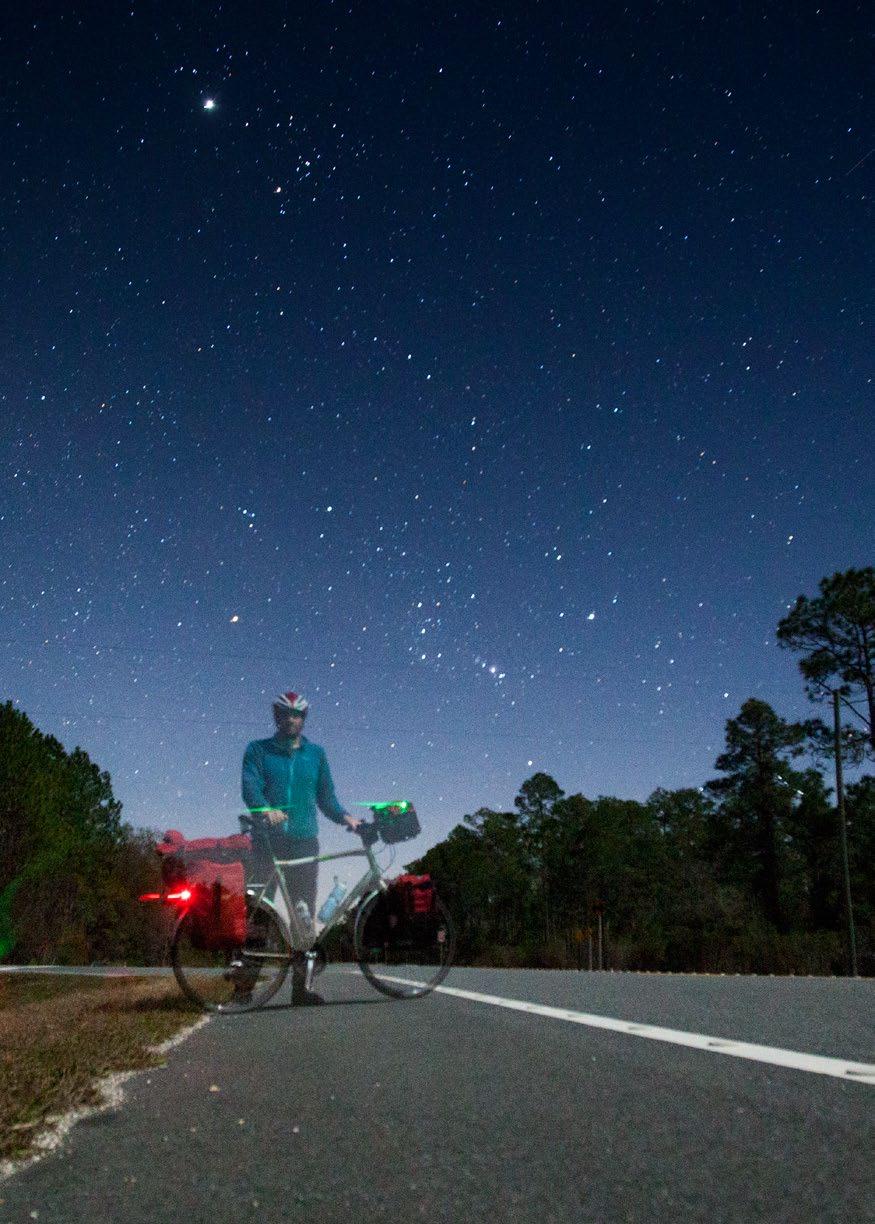
THE UPS & DOWNS OF A YEAR-LONG BICYCLE TOUR
WORDS & PICTURES BY DAVE GILL / VAGUEDIRECTION.COM
It was the end of spring, and it was another day at the office. A drag. A chore. A career path that I didn’t believe in. Later, I’d realise that this was the day that shifted my direction. It was the lightbulb moment, when I decided to quit, fly to New York and set off on a year long, 12,000 mile cycle touring adventure.
There were too many questions going on in my mind to stay, and my eyes would drift to the window with every spare moment. Why am I here when there are so many adventures to be had out there? I looked out, imagining travelling a long way by bike, using the imaginary ride to break the monotony.
It typically goes: newly independent men and women step into ‘the real world’, climb onto a career ladder and make upward steps, hoping to make their mark. They find partners, buy a home, have children and earn enough money to be comfortable. Fine, but why? Are those really the milestones that life should be based around? If they are, then awesome. But these don’t strike me as unreasonable questions to ask, considering our lives get shorter every day. Don’t we owe it to ourselves to explore the answers?
What I’d been seeing every day recently were the glazed-over eyes of people walking down the street who had either learnt that this model was the right one, or had just accepted it without question. I’m not convinced, even though part of me wishes I was. To me, they were drones, robots, automated capturedlives dedicated to a fantasy of contentment and a wish for fullness that might never come. My fear is
waking up as an elderly man and having a moment of realisation: as pleasant as life may have been, I’d lived a life that someone else had prescribed. It didn’t belong to me because I didn’t choose it, or even question it. I was just another old dude who’d taken part in a lifetime performance because that’s what we do. If I didn’t take action, I was on track to nonachieve the same fate. Suddenly a year living on a bicycle seemed like the most sensible thing to do.
I was in my early twenties, and as overly dramatic as it may sound, there’s something about hitting that age. It’s really the first time you realise that mortality is waiting for us all on (hopefully) a distant horizon. It’s oddly quantifiable - with good fortune we probably have around two-thirds of our lives left. But where did the first third even go? Wherever it went, it went fast. This isn’t a dilemma about death, it’s a dilemma about life and what to do with the single chance we’ve got.
Two months later, I packed up the used Trek that I’d found for a bargain price on eBay and set off with no idea what to expect. My panniers were full of unknown. No prior experience. No training. It was probably a bit foolish really. It was November 2012 when I landed in New York City from England, and it was the start of an unusual year. It was the learning that happened throughout the journey that surprised me the most. Learning about this type of lifestyle, about cycling, about the perils and the kindness that frequent being on the road, about people from all walks of life, about myself. The first few weeks on the road were a bizarre mix of hard and easy.









